The global online apparel market is expected to continue growing over the next few years due to increasing internet penetration, rising demand for convenient shopping options, and the presence of numerous online apparel retailers. The market is also driven by the growing popularity of mobile commerce and the increasing use of social media for product discovery and purchase. If you ever thought about a fashion online marketplace or other fashion eCommerce project, it’s just the right time, as there is still room for innovation. Here we’ll examine the potential growth points, best practices, must-have features, and examples to follow.
Global Online Apparel Market Outlook
According to a report by ResearchAndMarkets.com, the global online apparel market is expected to grow by 13.21% during the period 2021-2026. The growth can be attributed to rising penetration of smartphones and the internet, and the convenience of online shopping.
The biggest online fashion retailers include companies like Amazon, ASOS, Zara, H&M, and Forever 21. These retailers offer a wide variety of clothing and accessories for both men and women, and often have competitive prices and fast shipping options. Some popular B2B apparel markets include Alibaba, Global Sources, and Made-in-China.
It is worth noting that the outbreak of COVID-19 has significantly impacted the global online apparel market, with many consumers shifting their preference towards comfortable and casual clothing, as well as the growing importance of sustainable and eco-friendly fashion.
eCommerce Fashion Statistics
How big is the fashion industry? Let’s study the statistics:
- The global online fashion market size is expected to reach $2 trillion by 2027 (Source: Statista).
- The UK has the highest percentage of online fashion sales in Europe, with an expected eCommerce fashion sales value of £19.2 billion in 2021 (Source: Retail Gazette).
- In the USA, 96% of Americans have made an online purchase in their lifetime, while 80% have made an online purchase in the past month (Source: BigCommerce).
- The most popular items purchased online in the fashion category include clothing, shoes, and accessories (Source: Shopify).
- With the rise of mobile shopping, 62% of smartphone users have made a purchase on their mobile device in the past six months (Source: OuterBox).
So, the market is growing year by year, and more and more eCommerce fashion brands join the niche introducing new directions for the online fashion eCommerce development.
Top fashion eCommerce trends in 2023
Fashion hits the market when new fashion trends are introduced by designers, celebrities or influencers. These trends then become popular and are adopted by consumers through various mediums such as fashion magazines, social media, and retail stores. To keep up with the times, you need to use these resources and offer innovations. Top apparel eCommerce trends in the online boutique industry include increasing use of AI and AR technologies to enhance the online shopping experience, growing popularity of sustainable and ethical fashion, and expansion of online marketplaces and social commerce.
Other general fashion product trends involve:
- Image optimization: More and more people are shopping for fashion apparel with the use of different devices. Websites need to optimize their images for fast image uploading.
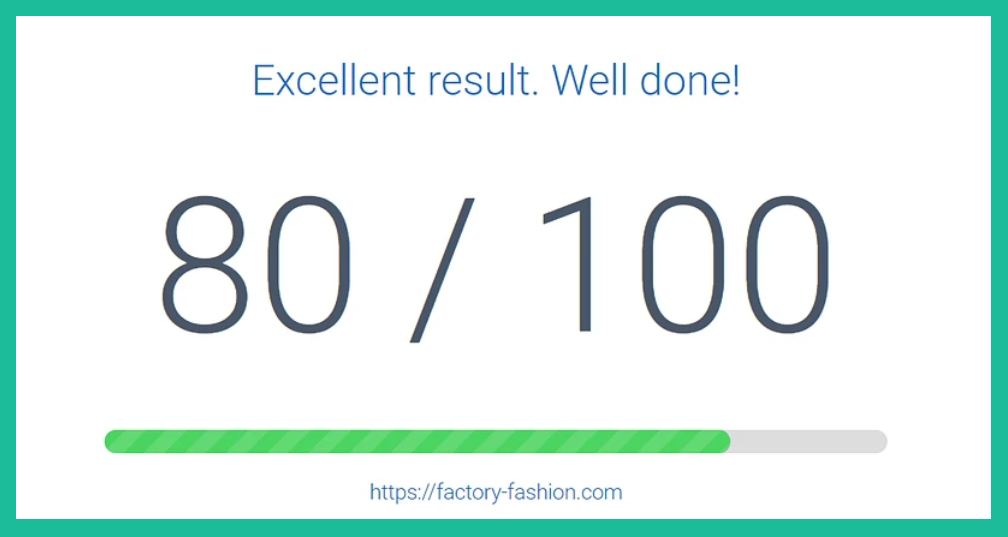
- Personalization: Customers expect a more personalized shopping experience, including product recommendations and targeted marketing.
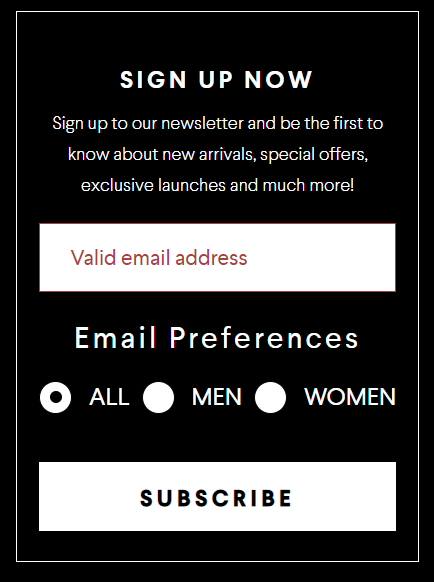
- Sustainability: Many shoppers are interested in buying from sustainable clothing brands that prioritize environmentally friendly production methods.
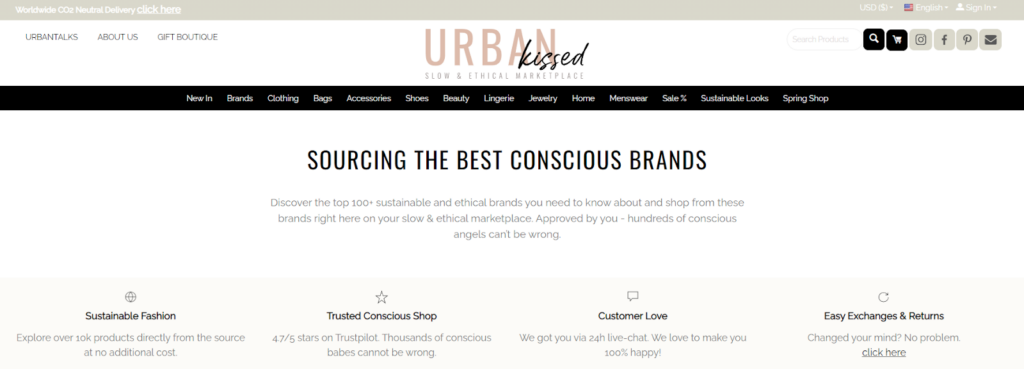
- Social media influence: Influencers on platforms like Instagram can have a big impact on fashion trends and sales.
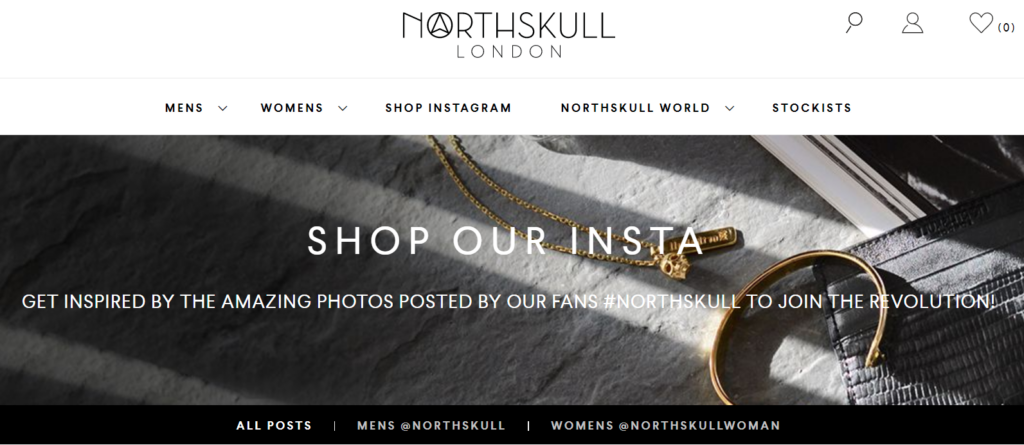
- Virtual try-ons: Augmented reality and virtual try-on technology can help customers make more informed purchase decisions.

6. Pre-loved clothing: Secondhand boom is the growing trend of purchasing second hand items. It is a way of reducing waste and saving money. More and more people are increasingly becoming aware of the impact of consumerism on the environment and are opting for more sustainable choices. Recently, Malaysia got a secondhand boom. The secondhand market has been boosted by the rise of eCommerce platforms, making it easier for people to buy and sell pre-loved items online.
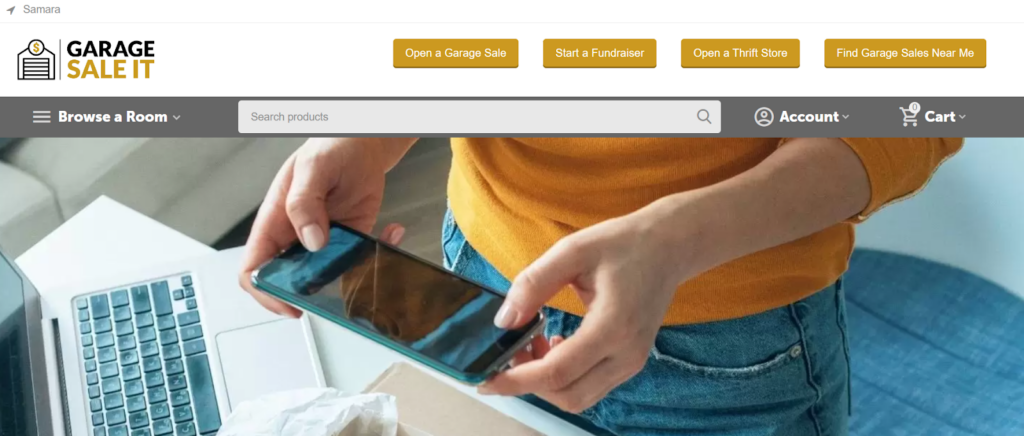
What Do Customers Value In Fashion Clothing eCommerce
Being on the same page with industry leaders is important, but meeting customer needs is equally meaningful. Digital entrepreneurs should understand their target audience. Fashion eCommerce customers value convenience, personalized experiences, transparency, social responsibility, product quality, and value for money among other things. Apart from brand image features, your target audience will estimate if your site speed and performance are great (especially, during the high season). The right hosting solution will cover the ‘technical’ side of the business. When deciding on opening a fashion marketplace, consider how to satisfy these needs in the first turn.
Tips For Improving Sales
Here are our tips for improving fashion online sales:
Optimize your fashion eCommerce website for user experience
User experience (UX) in clothes eCommerce refers to how users interact with the website, navigate through pages, and ultimately make a purchase. It includes elements such as visual design, ease of use, responsiveness, and overall satisfaction.
Some key factors to consider when creating a fashion eCommerce site with a focus on user experience include:
- High-quality product photography: The site should feature high-quality images that showcase the products in detail from multiple angles with zoom in capability, and 360 degree rotation.
- Personalization: The site should offer personalized recommendations based on the user’s interests and purchase history. This may include the ‘You may also like’ section or suggesting product bundles with matching items. Zara, ASOS, and Farfetch use ML and AI algorithms for their personalized offers. Their recommendation systems are powerful enough to suggest personalized products based on the user’s behavior on the site, purchase history, browsing history, recent searches and viewing history. Some popular AI and ML libraries for building recommendation systems include TensorFlow, PyTorch, Scikit-learn, and Apache Mahout. Another option is to use Blog for recommending.
Cooperate with large media for promoting
Large media outlets have a huge reach and audience base, which helps in promoting a product or service to a wider audience. Cooperating with large media outlets can give you access to their existing audience and help in building brand awareness, increasing visibility, and driving traffic to your website or product.
Collect feedback
Collecting feedback is essential for businesses and organizations to improve their products, services, and processes. Feedback allows them to understand their customers’ needs, preferences, and pain points, and make necessary changes to address them. It also helps businesses to identify areas of improvement and prioritize their efforts accordingly.
Feedback can be collected through various channels, such as surveys, reviews, social media, customer support interactions, and more. It is important to analyze and act upon the feedback received, as it can lead to increased customer satisfaction, loyalty, and retention.
Additionally, feedback can also help businesses to innovate and stay ahead of the competition. By listening to their customers’ feedback, businesses can identify emerging trends, new opportunities, and needs, and create products and services that meet those demands.
Optimize images
Web pages with optimized images load quicker and are accessible to users with slow internet speeds or limited connectivity. Optimized images reduce storage and bandwidth costs, which is essential for an eCommerce website as it is a visual-heavy platform.
Draft appealing and complete product descriptions
Accurate and detailed product descriptions show customers that the website cares about the products they sell and are knowledgeable about fashion. This builds trust and credibility with potential customers.
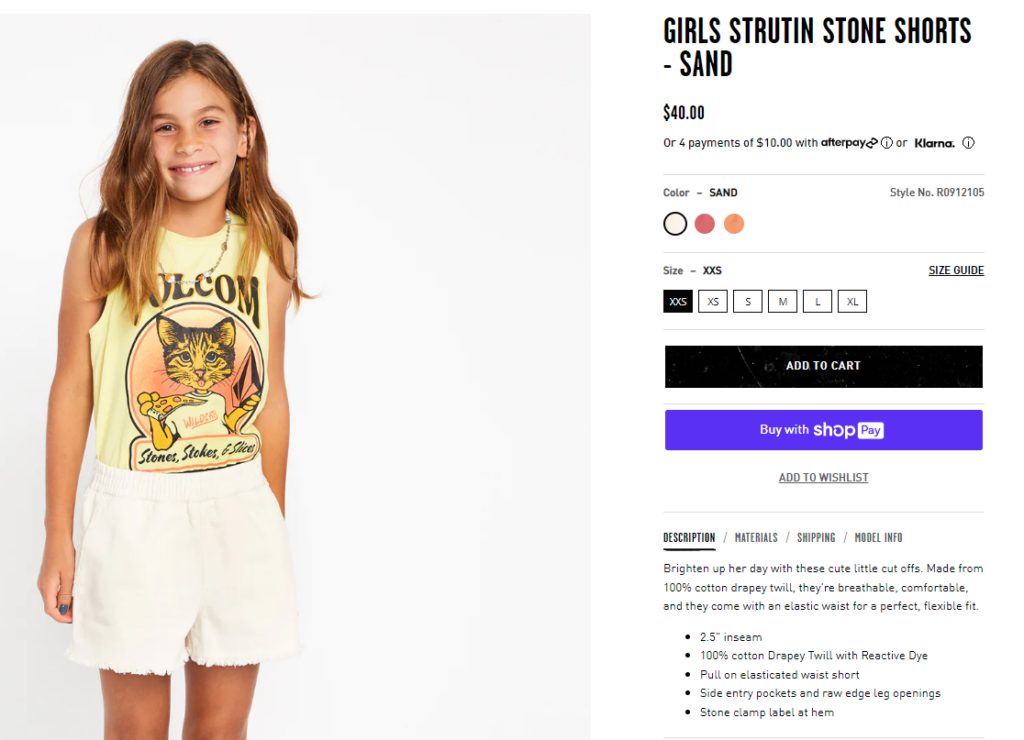
A well-written product description (see the example of Volcom fashion brand above) should include details such as the product’s features, benefits, materials, dimensions, and care instructions. It should also be easy to read and understand, engaging, and persuasive. Product descriptions can also help with search engine optimization (SEO) by including relevant keywords that users might search for when looking for that product.
Use responsive design
The site should be optimized for multiple devices, including desktops, laptops, tablets, and smartphones.
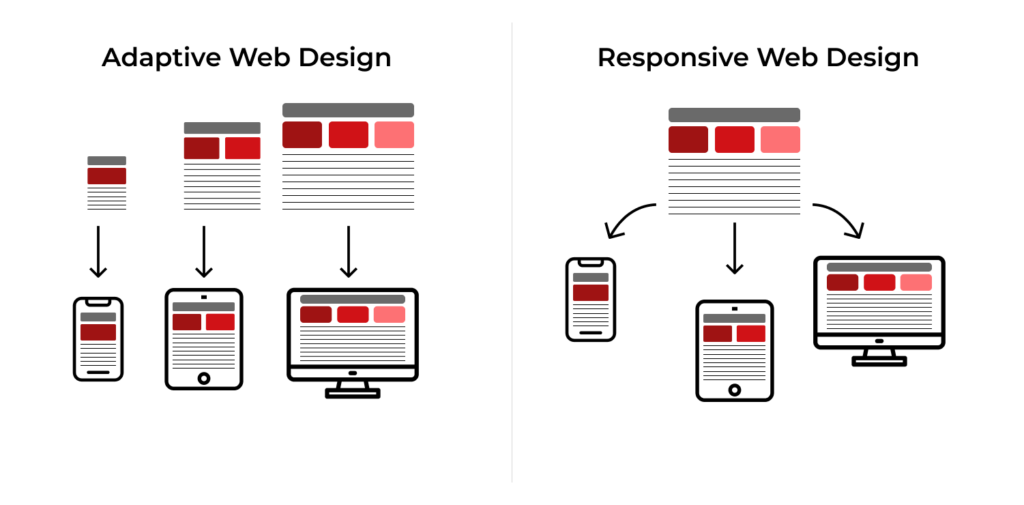
Cater for UX/UI
With simple and clear navigation, users can easily find what they are looking for, whether it’s a specific product or category.
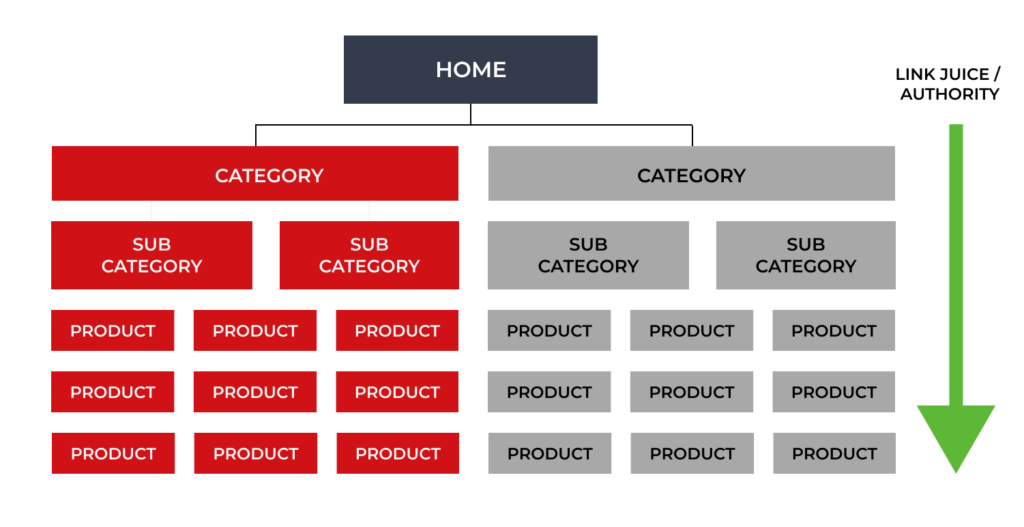
eCommerce Fashion Website Development – Our Cases
As we have examined the fashion eCommerce site theory, let’s see our customized sites to understand their success.
The Real Luxury
Our client – The Real Luxury uses appealing photography with zoom-in features and a clear menu.
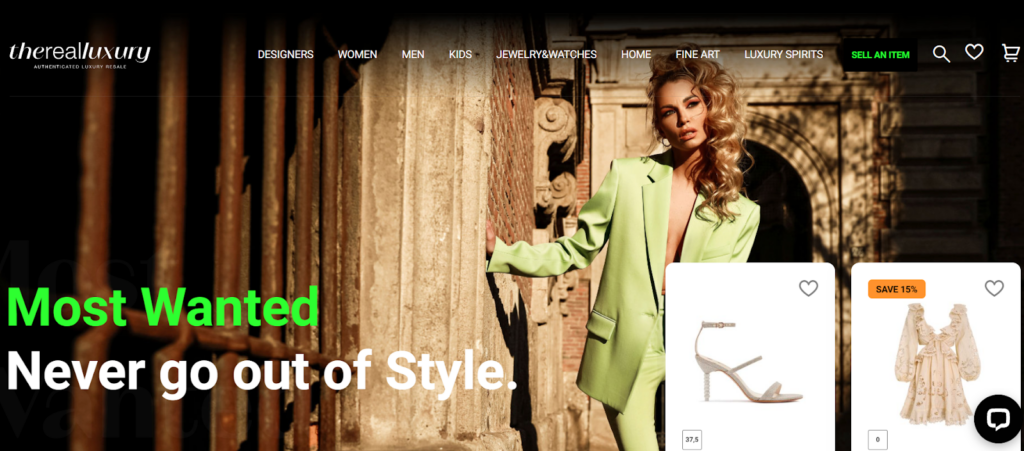
To allow a more comfortable shopping experience, they offer visitors to enlarge pictures and view their favorite item in more detail.
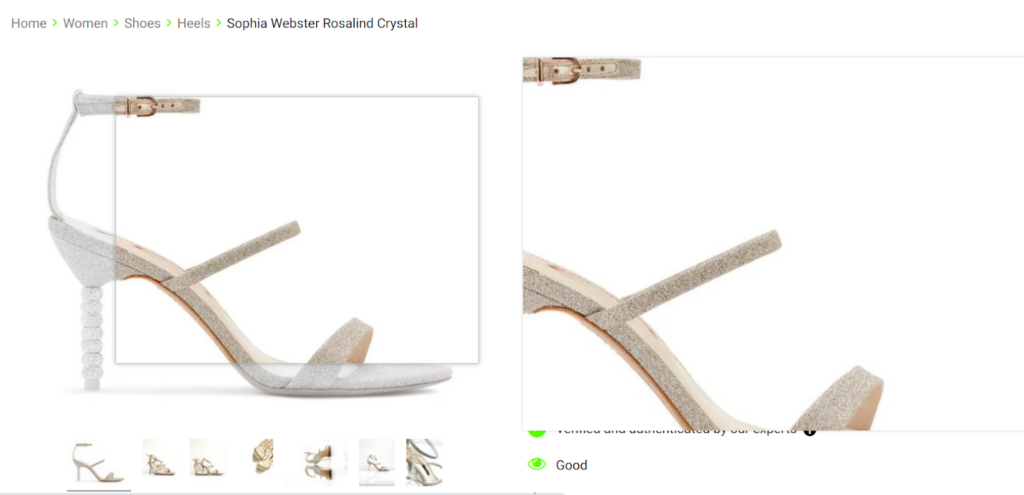
The Real Luxury uses the blog function to recommend clothes. Blog is a simple and elegant solution for cross-selling with minimum investment.
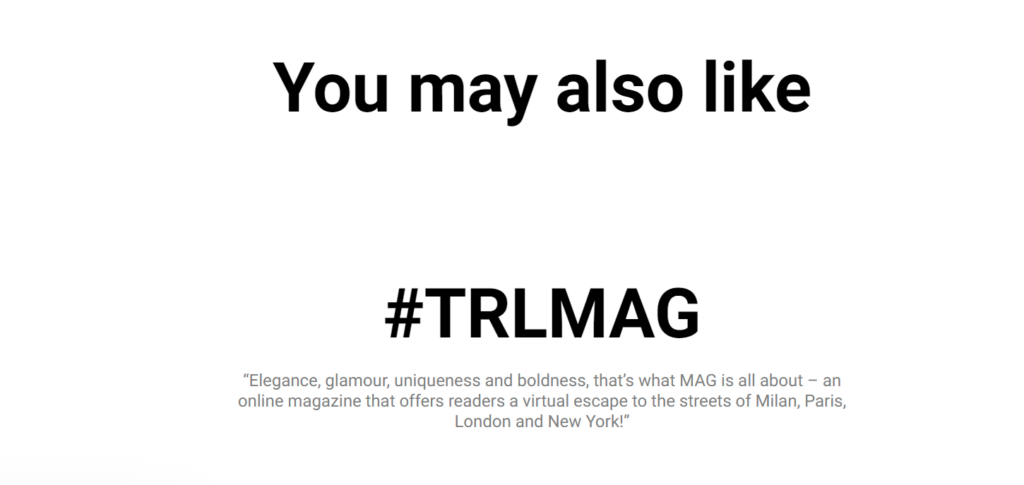
Urbankissed
Urbankissed is a fashion marketplace that offers sustainable and ethical fashion for conscious consumers. Their collection includes clothing, jewelry, bags, shoes, beauty, and wellness products from brands committed to sustainability, ethical manufacturing, and social responsibility. Some of their conscious brands they carry are Mate the Label, SOKO, Nisolo, and Voz.
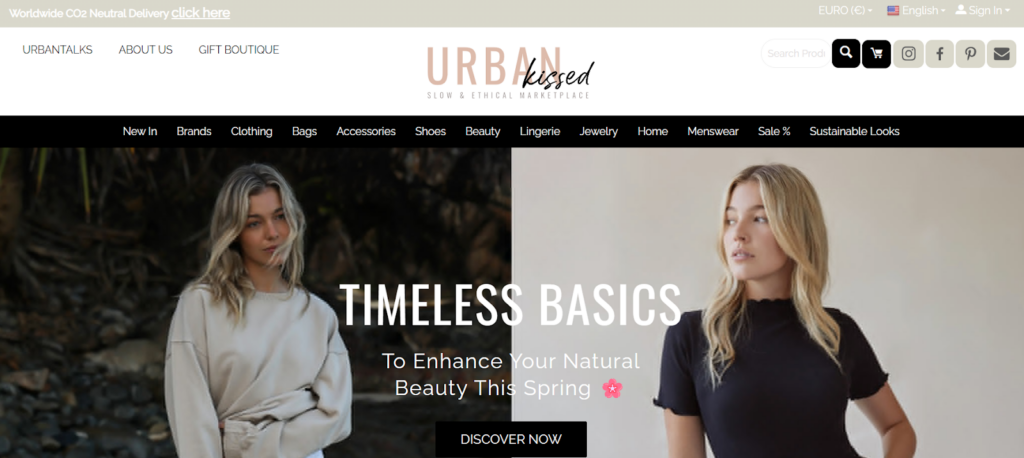
Urbankissed created a separate page to recommend Looks
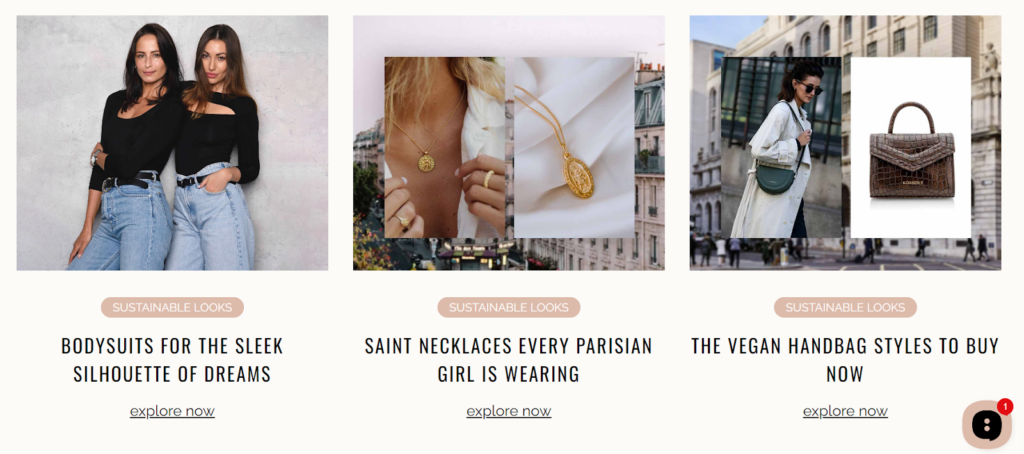
Urbankissed cooperated with Financial Times among others and had their mentioning
URBANTALKS is a blog page with the articles that promote the Urbankissed brands and products and link to the appropriate brand/product pages
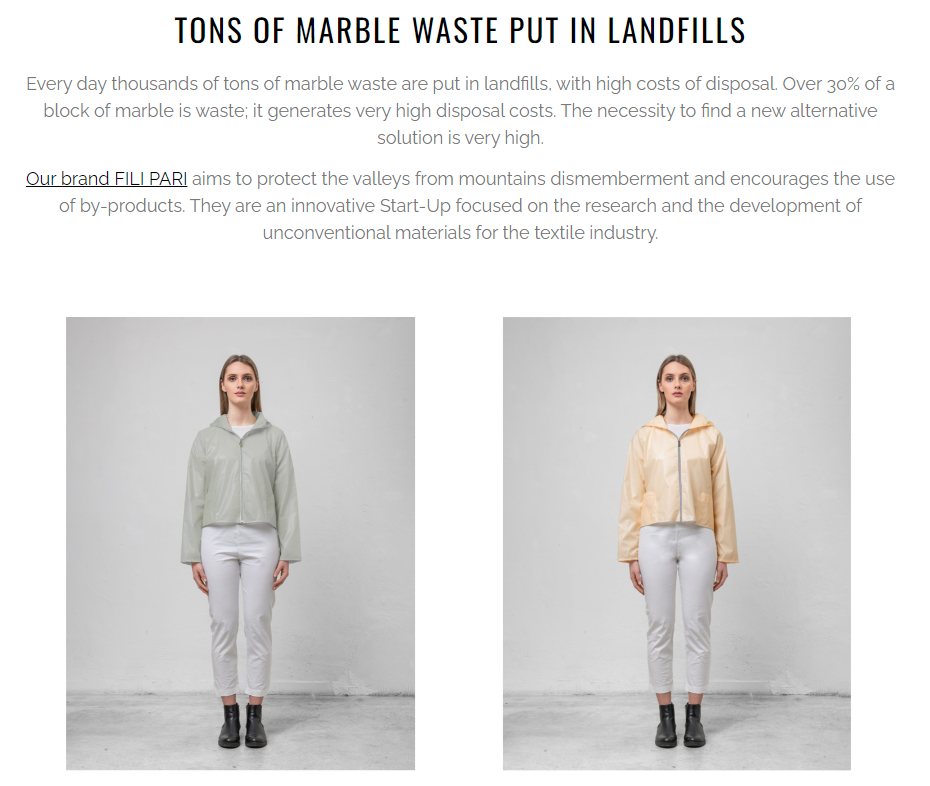
Just in one year the marketplace doubled the number of vendors from 50 to 100.
We guess the success is hidden behind the following practices:
- Sustainable and ethical products: Urbankissed offers a wide range of sustainable, eco-friendly, and ethical products.
- Independent designers and brands: the company supports independent designers and small brands that prioritize sustainability in their production processes.
- Transparency: Urbankissed provides transparency about the sourcing, production, and materials used in the products.
- Community-driven: Urbankissed is a community-driven platform that connects fashion consumers who prioritize sustainability with designers and brands that share those values.
- Fashion Advice: To help their customers make more informed choices, Urbankissed provides fashion advice on how to style and pair sustainable clothing.
Simtech Development experts customized the Urbankissed platform to create a seamless shopping experience for customers and provide a user-friendly interface for vendors.
Northskull
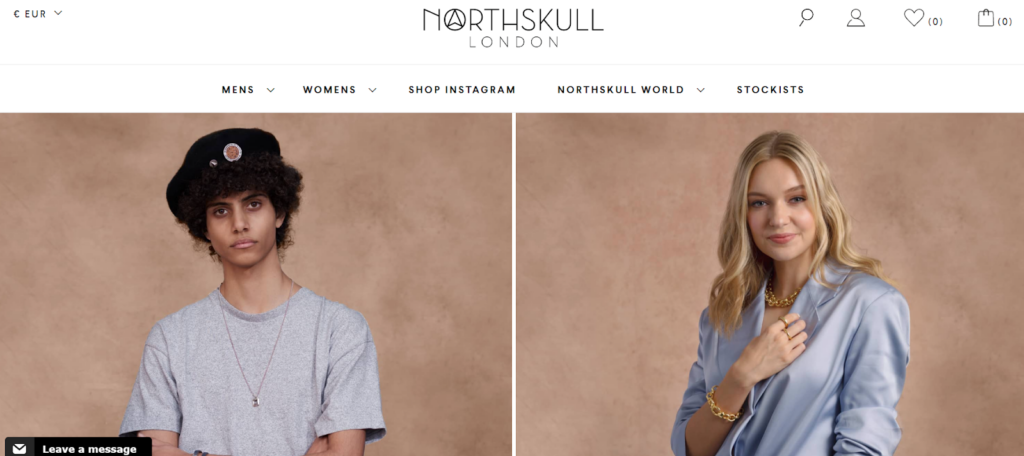
Simtech Development customized Northskull’s eCommerce platform to improve the customer experience and increase sales.
We have introduced the new features:
- Developed a custom theme for Northskull’s website to match their brand image and improve usability.
- Implemented a new payment gateway to accept a wider range of payment options.
- Added new features such as product customization to enhance the customer experience.
- Optimized the website’s loading speed and search engine optimization (SEO) to increase visibility on search engines.
- Integrated analytics tools to measure site performance and provide insights on visitor behavior.
Summarizing
While developing a fashion website, follow the key points:
- Choose the right platform: Consider using popular eCommerce platforms: cloud solution (for plugin-based easy start) or license-based CMS (to have more room for customizations).
- Use High-Quality Images: Fashion eCommerce sites require high-quality images to showcase products. Consider professional photography and editing to ensure high-quality images.
- Ensure the platform allows for a responsive design: make your site mobile-friendly and optimized for different devices as many customers access eCommerce sites through mobile devices.
- Cater for the user experience: Make sure that the site is easy to navigate, the checkout process is simple, and there are clear calls to action and product descriptions.
- Ensure that the eCommerce site is secure and integrates with a reliable payment gateway to make sure that customers can complete transactions safely.
- Integrate social media accounts like Instagram and Facebook into the eCommerce site to increase engagement, customer retention, and conversion rates.
- Optimize the eCommerce site for search engines and implement strategies like email marketing and affiliate marketing to drive sales.
Simtech Development can help with your CMS customization, adding enhanced filters and search capabilities, creating UX/UI design for better website perception, connecting local payment and shipping systems for better meeting customer preferences, improving SEO and more.
FAQ about Fashion Ecommerce Development
What are the best practices for optimizing product pages in fashion eCommerce?
1. Size and Format: Your images should be high-quality JPEG or PNG files, and the size should be optimized for web use to ensure fast loading times.
2. Consistent Style: Use consistent lighting, backgrounds, and styling for all the images, it helps customers see a consistent view of the product.
3. Multiple Angles: Show the product from multiple angles to give customers a clear view of the product.
4. Zoom: Allow customers to zoom in on the image to get a closer look at details, fabric, and color.
5. Alt Tags and Descriptions: Ensure that each image has an alt tag and description that clearly describes the product.
6. Lifestyle Imagery: Include lifestyle images that show the product in use, it can help customers visualize themselves using the product.
How can I improve my site’s mobile responsiveness?
1. Use responsive design: Use CSS media queries to adjust the layout and content of your site based on the device size.
2. Optimize images: Use compressed images and limit the use of large images, as they take longer to load.
3. Use a mobile-friendly font: Use a font that is easy to read on smaller screens, and adjust the font size to ensure it is readable.
4. Prioritize content: Prioritize the most important parts of your site and make sure they are visible on smaller screens.
5. Test your site: Use tools like Google’s Mobile-Friendly Test to see how your site performs on mobile devices.
Which payment gateways suit best for fashion eCommerce?
Here are some of the popular payment gateways that are commonly used in fashion eCommerce sites:
– PayPal
– Stripe
– Authorize.net
– Square
– Braintree
– 2Checkout
These payment gateways are well-known for their security, reliability, and ease of use, which are essential for online businesses.
What are the most effective marketing strategies for fashion eCommerce?
1. Social media marketing: Use social media platforms like Instagram, Facebook or Pinterest to showcase your products and create a community around your brand.
2. Influencer collaborations: Partner with influencers/ celebrities to feature your products and reach a wider audience.
3. Email marketing campaigns: Use email campaigns to notify your subscribers of exclusive deals, new arrivals, etc.
4. Search engine optimization (SEO) for fashion eCommerce: Optimize your website with relevant keywords and meta tags to rank higher in search engine results.
5. Retargeting campaigns: Target potential customers who have visited your website before with personalized ads, reminding them about your products.
6. User-generated Content: Foster engagement by asking customers to share photos of themselves in your products, or post product reviews, offering discounts, et cetera.
7. Advertisements on Google and social media platforms such as Facebook and Instagram
These are the most effective marketing strategies for fashion eCommerce. Implementing a combination of these strategies will allow you to increase brand awareness, drive traffic to your website, and ultimately increase sales.
What are the objectives of apparel marketing?
The main objectives of apparel marketing are:
– increase brand awareness and recognition
– drive sales and revenue
– establish and maintain a strong brand image
– differentiate the brand from competitors
– create customer loyalty and repeat business
– increase market share and expand into new markets
– gather customer feedback and insights for fashion eCommerce product development and improvement
– stay up-to-date with the latest fashion trends and consumer behavior.
How can I reduce cart abandonment rates in my online store?
1. Offer free shipping or discounts: high shipping costs or final price can often scare off potential customers.
2. Simplify the checkout process: Make the checkout process as simple as possible, with minimal clicks required to purchase clothing online. One-click checkout is a great way to do this.
3. Provide a guest checkout option: Not everyone wants to create an account before they make a purchase. Offer a guest checkout option to reduce customer frustration and increase conversions.
4. Show product images and reviews: High-quality product images and positive reviews can go a long way in convincing customers to make a purchase.
5. Use retargeting ads: Automatically display ads to visitors who abandoned their shopping cart, encouraging them to come back and complete the purchase.
6. Offer multiple payment options: Make sure to offer multiple payment options to accommodate different preferences.
How can I effectively use social media to boost sales in fashion eCommerce?
1. Identify your target audience: Before creating any social media strategy, identifying your target audience is key. Knowing who you are trying to sell to can help narrow down which social media platforms they frequent and what type of content they are interested in seeing.
2. Create visually appealing content: Social media is all about visual content. High-quality images and videos of your products are essential to grab the attention of potential buyers. Make sure to feature multiple angles of the product and include close-up shots.
3. Use influencers: Social media influencers and bloggers can give your fashion eCommerce site a boost. Reach out to fashion bloggers or influencers who align with your brand, and ask them to share your products with their followers.
4. Run social media ads: Running ads on social media is an effective way to reach a wider audience. Platforms such as Facebook and Instagram allow you to create highly targeted ads based on demographics, interests, and behavior.
5. Engage with your followers: Engaging with your followers is key to building brand loyalty. Responding to comments and messages in a timely manner can lead to increased sales and better customer relationships.
6. Analyze your results: Use social media analytics tools to track your progress and see which posts and strategies are working best. Use this information to fine-tune your social media strategy and boost sales.
Overall, social media can be a powerful tool in boosting sales for fashion eCommerce sites. By creating visually appealing content, using influencers, running ads, engaging with followers, and analyzing results, you can effectively leverage social media to increase sales.
What are the most popular and successful fashion eCommerce platforms?
The widely used eCommerce platforms in the clothing industry worth mentioning include Magento, Shopify, WooCommerce, CS-Cart and BigCartel. Each platform has its unique features and benefits, and you can choose the one that best suits your needs.
How can I manage inventory effectively in fashion eCommerce?
1. Use a centralized inventory management system that tracks stocks and sales in real-time and can be easily updated or synced with different channels, such as your website, marketplace, or physical shop.
2. Optimize your forecasting and replenishment processes to avoid overstocking or running out of popular items. You can use historical data, seasonality, trend analysis, or AI-powered algorithms to predict demand, set safety stock levels, and automate reorder triggers.
3. Categorize your products by attributes such as color, size, style, materials, or SKU to streamline your inventory organization, search, and reporting. You can also use tags, labels, or barcodes to identify and track specific items.
4. Implement a flexible pricing and promotion strategy that balances your inventory goals, customer preferences, and competitive landscape. You can use dynamic pricing, clearance sales, bundle offers, or loyalty programs to incentivize purchases and move slow-moving items.
5. Monitor and analyze your inventory performance regularly to identify strengths, weaknesses, and opportunities for improvement. You can use KPIs such as inventory turnover, sell-through rate, days of supply, or gross margin to assess your inventory health and make data-driven decisions.
What are the most important metrics to track in fashion eCommerce?
The following are some of the important metrics to track in fashion eCommerce:
– Conversion rate
– Average order value (AOV)
– Customer acquisition cost (CAC)
– Customer lifetime value (CLV)
– Cart abandonment rate
– Return rate
– Traffic sources
– Mobile vs desktop traffic and sales
– Click-through rate (CTR) on product listings
– Time on site
These metrics can help fashion eCommerce businesses to optimize their strategies and improve their performance.
What is the average revenue for online clothing stores?
According to a report by eMarketer, in 2020, the global revenue for online fashion and apparel sales is projected to reach $759 billion. The revenue for online clothing stores can vary greatly depending on the size and type of store, the niche market it is catering to, and the marketing strategies being implemented. The ZipRecruiter site can provide you with online boutique salaries by cities.
